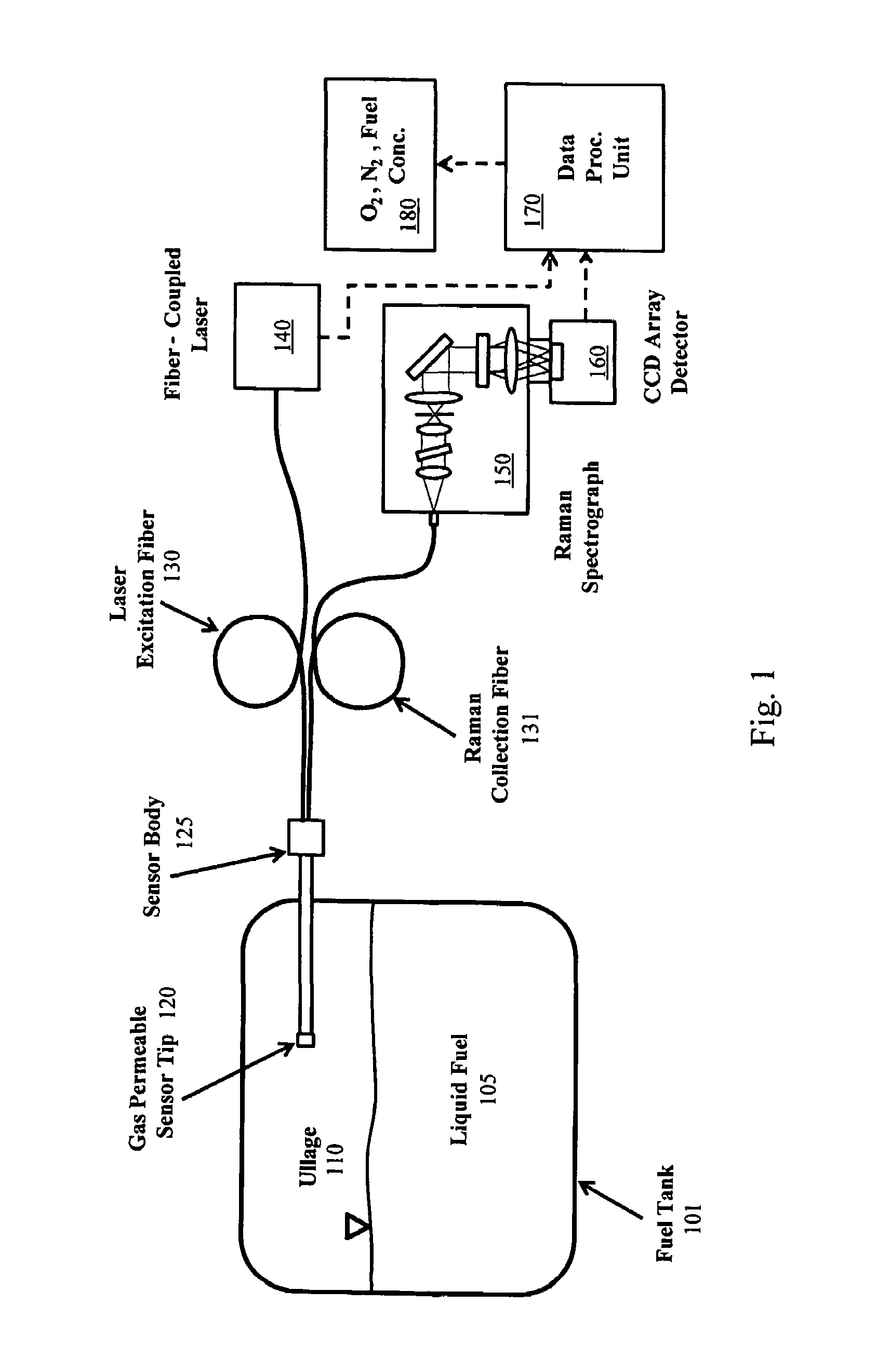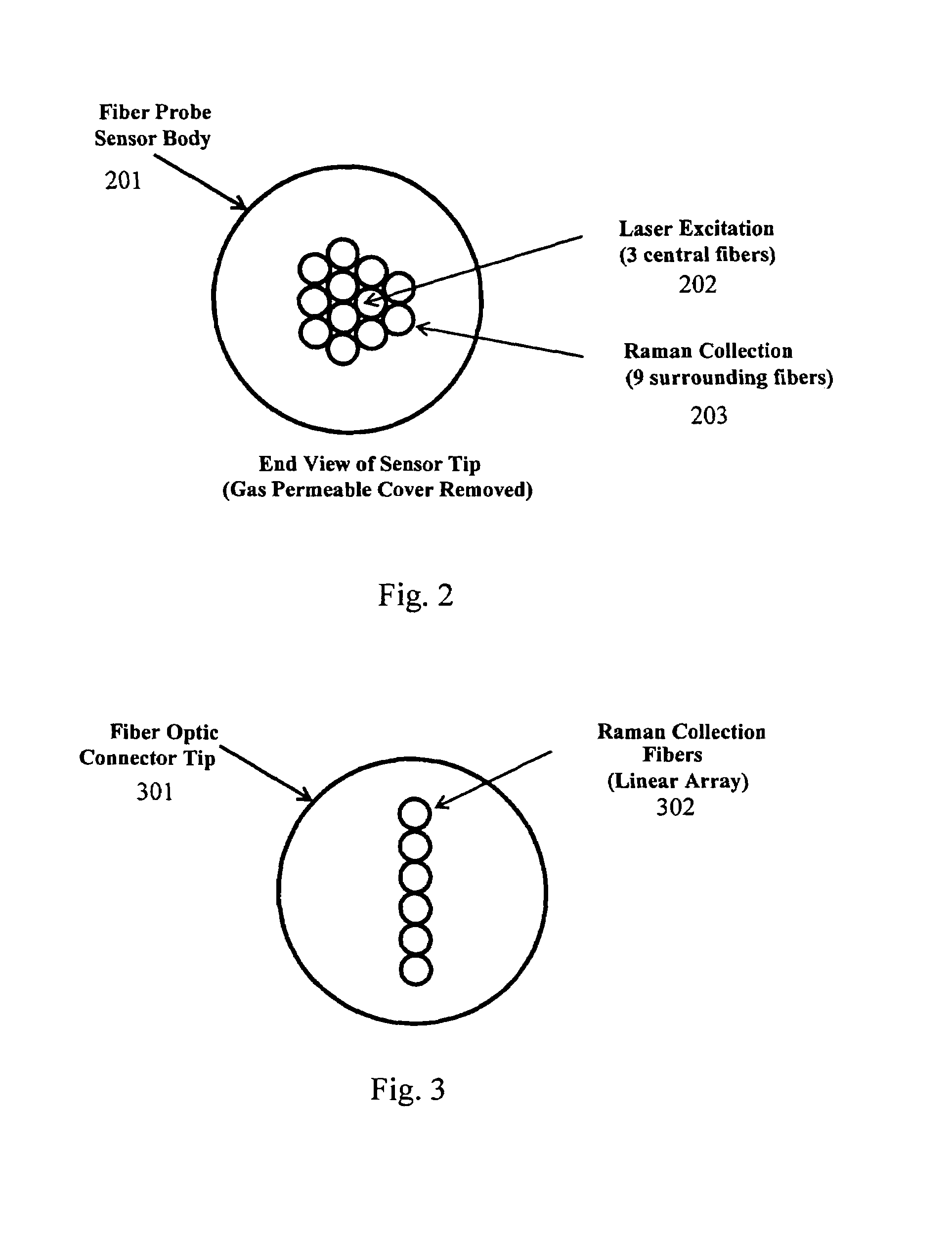Method and system for fiber optic determination of gas concentrations in liquid receptacles
a technology of liquid receptacles and fiber optics, which is applied in the direction of optical radiation measurement, instruments, spectrometry/spectrophotometry/monochromators, etc., can solve the problems of ineffective technique for reliable measurement of oxygen concentration, sensor prone to large drift, and fire hazards
- Summary
- Abstract
- Description
- Claims
- Application Information
AI Technical Summary
Benefits of technology
Problems solved by technology
Method used
Image
Examples
Embodiment Construction
[0036]The present invention seeks to provide quantitative and accurate measurements of the compositions of gaseous materials in liquid receptacles. The present invention also seeks, in one embodiment, to provide a quantitative and accurate measurement of the concentration of nitrogen, oxygen, and fuel vapor in the ullage of a fuel tank. This information is needed in order to provide control information for an OBIGGS, and also for the determination of the appropriate levels of inerting required for safety. The ullage gas sensor system is based on spontaneous vibrational laser Raman scattering from the species of interest. Raman scattering is used because it is one of the few optical techniques that permits the simultaneous multi-species measurements of chemical concentrations.
[0037]The system provides an accurate and quantitative identification of the above gases with an accuracy of better than 1% (by volume) over approximately a 1 minute time duration. The technology described in th...
PUM
| Property | Measurement | Unit |
|---|---|---|
| pressure | aaaaa | aaaaa |
| pressure | aaaaa | aaaaa |
| full-width-half-max | aaaaa | aaaaa |
Abstract
Description
Claims
Application Information
 Login to View More
Login to View More - R&D
- Intellectual Property
- Life Sciences
- Materials
- Tech Scout
- Unparalleled Data Quality
- Higher Quality Content
- 60% Fewer Hallucinations
Browse by: Latest US Patents, China's latest patents, Technical Efficacy Thesaurus, Application Domain, Technology Topic, Popular Technical Reports.
© 2025 PatSnap. All rights reserved.Legal|Privacy policy|Modern Slavery Act Transparency Statement|Sitemap|About US| Contact US: help@patsnap.com



